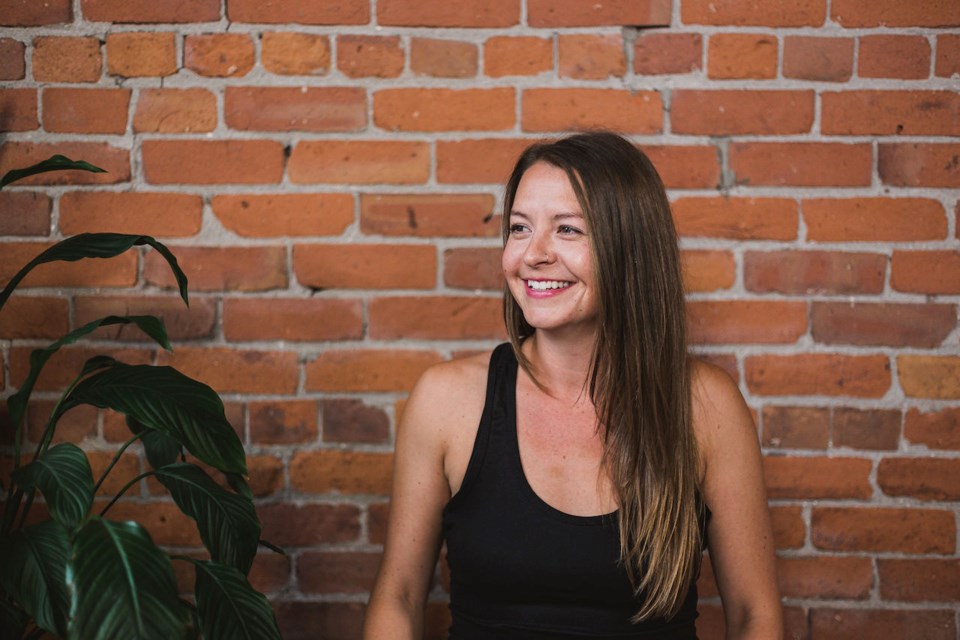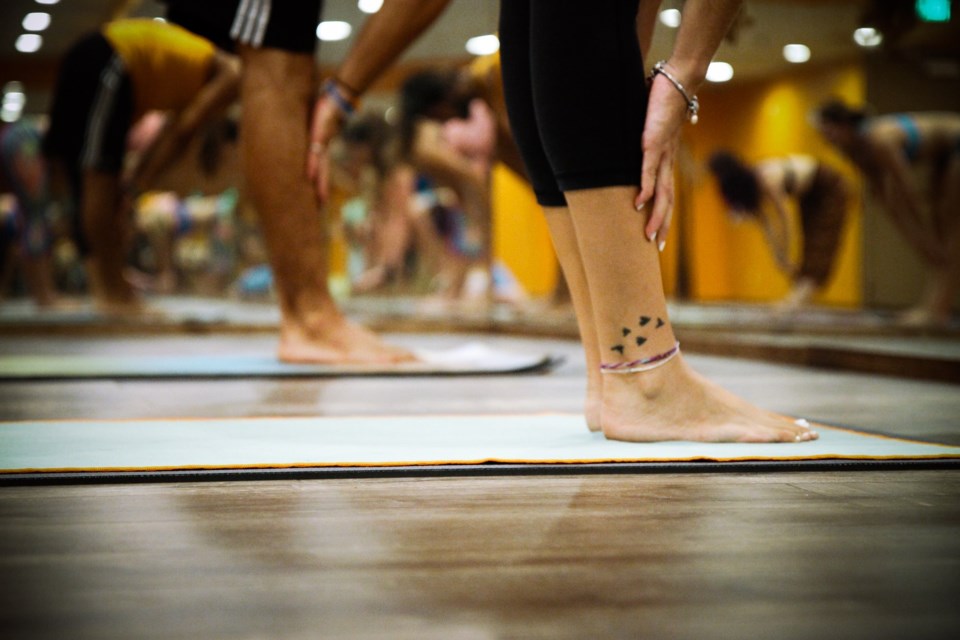Though we all know the importance of exercise for our mental health, if you have been hurt physically, emotionally, or sexually, stepping into a traditional fitness class where the instructor tells you what to do with your body or touches you without warning may be too much to bear.
Enter trauma-informed yoga.
"Taking a trauma-informed approach means that you are really empowering the student or individual to make choices for themselves," says Squamish's , who leads the yoga therapy training programs at the Vancouver School of Healing Arts and teaches classes locally.
In yoga classes designed for survivors with trauma, there is less active command language, such as 'Lift your arms up toward the ceiling,' according to Lee. In every cue, there's an invitation to move a certain way, rather than a command.
Students are also guided to notice what they are feeling in their body.

With trauma, people can have a freeze response, where they feel numb and can disassociate. Alternatively, they may become hyper-vigilant and experience a constant fight or flight response.
"In either of those cases, we tend to stop paying attention to the signals from our bodies," Lee said.
In these trauma-sensitive classes, yoga teachers also stay on their mat, rather than wandering around the yoga room amongst the students.
Lights are kept on and if there is any touching of students by teachers at all — to help learn moves, for example — the instructor seeks permission first and is explicit in where and why she is touching.
"When there is trauma, we have our choice taken away from us so we use the yoga practice as a way to take that power back," Lee said.
She said that almost everyone, in some way, has experienced trauma and so the principles of trauma-informed yoga are useful for many.
Some first responders in Squamish, for example, take trauma-informed classes to help deal with the fallout from what they deal with in their line of work.
"We know from our understanding of the nervous system now and all the research that we have, that the removal of threat, doesn't equate with [a feeling of ] safety. You could be far from an event and not having the perpetrator there or you are not in the fire anymore, but your nervous system can still be in the state of threat," she said. Trauma-informed yoga helps to establish that feeling of safety for students, though what defines safety is up to the individual and is not determined by the instructor, Lee stressed.
The organizations and are collaborating on a five-year research project called “Reaching Out with Yoga” funded by the Public Health Agency of Canada that provides trauma-sensitive yoga programming in transition houses across B.C.
Yoga Outreach provides trauma-informed yoga services to social service facilities, prisons, mental health teams, addiction recovery centres, community centres, and transition houses for women and children, including in Squamish, according to Delanie Dyck, executive director at the not-for-profit.
"We actually have a pilot project at the working with children, as part of their to see if trauma-informed yoga can have benefits for children who have witnessed or have experienced violence," she said.
Lee would like to see the trauma-informed approach currently being applied to yoga expanded to many other wellness disciplines such as with physiotherapists, chiropractors and the like.
"I have worked with other healthcare practitioners looking at how we can implement the same trauma-informed approach to all modalities because I really think there is the opportunity in all of it," she said.
The history
Yoga has been practiced in North America since the late 1800s and has continued to evolve in terms of the forms practiced since then.
At the same time, the field of psychology deepened and expanded, furthering our understanding of mental health and the importance of it.
By 1980, Post Traumatic Stress Disorder (PTSD) had made its debut in the third edition of the
In the 1980s, millions in North Americans were twisting themselves into shapes on yoga mats or in the more popular — at the time — aerobic fitness classes inspired by Jane Fonda's at-home exercise video craze.
It has taken a couple of decades more for understandings of trauma to become more mainstream and for yoga to blossom in popularity.
Google trends reflect what people search for and thus are interested in.
Several of the local yoga studios offer trauma-informed yoga practices. Check with your favourite to find out more.




